How to Fix Back Pain in Young Adults
Back pain, usually in the lower back, is a common problem. Fortunately, most back pain gets better relatively quickly and there are simple things that can be done to recover and reduce the chance of pain returning. These include keeping positive and active.
Key points
- Most back pain is not serious and will improve over time.
- To help you recover more quickly, keep active and continue to move your back. It is fine to have some pain while moving.
- Keep doing your normal work or daily activities, or return to doing these as soon as you can.
- Use heat or ice packs, pain relief medication and exercise or massage if these reduce your pain.
- Rarely is back pain a sign of a more serious problem. But you should get it checked right away if you:
- have any weakness in your lower legs
- develop any bowel or bladder problems (such as not being able to pee even though your bladder feels full, or you have incontinence when you pee or poo unexpectedly)
- have numbness over your buttocks or anal region (back passage).
What are the symptoms of back pain?
Back pain refers to pain or stiffness in the back. You may have limited movement and moving your back may increase you pain. Sometimes pain may spread to your buttocks or legs. You may also feel pins and needles or numbness in one of your legs or feet.
What causes back pain?
Most back pain is not due to any serious injury or disease. People often have back pain for no apparent reason or after a minor or common movement. This means that there has not been any injury.
Sometimes back pain starts after you use your back differently or more than normal, like heavy lifting, this does not necessarily mean that you are injured. Back pain can also start after something traumatic like a fall or collision.
Types of back pain
Back pain can start suddenly or it can come on slowly over a few days or weeks.
- Most episodes are short term (acute back pain). These episodes often improve a lot over the first 2 weeks, then settle further over the following months. Do not be concerned if you continue to have low level discomfort .
- Sometimes back pain can last longer than 3 months (persistent back pain). This does not mean that there is a serious problem. Persistent pain also tends to get better over time. Read more about chronic pain.
- It is not uncommon to have further episodes of back pain (recurrent back pain). This does not mean that your back has not healed from the previous episode. There are things you can do to reduce the chance of recurrence.
- If a nerve in your back becomes irritated, you may have pain that is worse in your lower leg than your back (leg-dominant or radicular pain). This often resolves with time, but it is a good idea to see your doctor to discuss whether specific medication may be helpful.
- If a nerve in your back is compressed, you may have weakness and numbness in one of your legs. This often resolves with time, but it is a good idea to see your doctor so that they can assess your nerve function and help you to decide whether any other treatment options are needed.
Activity and back pain
Back pain is one of the most common reasons for time off work, but staying at work has been shown to improve recovery, although you may need to modify some tasks. When you have back pain, keep as active as you can. Avoid bed rest — this does not help and can make symptoms worse. Although you may feel some pain when you are active, it is safe to exercise while you have back pain.
| Benefits of keeping active |
| Keeping active will:
|
Things you should know
Ideas about back pain have changed a lot over recent years. It is a good idea to read more about back pain as you may be surprised to discover that some of the things you thought were bad for the back are actually not a problem (or are even good for it). Examples include:
- sitting is not bad for the back
- poor posture cannot injure the back
- the back is designed to bend, twist and lift
- moving and using the back makes it more healthy.
Read more at 10-facts-about-back-pain or 15 things you didn't know about back pain.
What to do if you have back pain
Fortunately, most back pain gets better relatively quickly and there are simple things that can be done to recover and reduce the chance of pain returning. It's important to keep doing your normal work or daily activities, or return to doing these as soon as you can. You can use heat or ice packs, pain relief medication and exercise or massage if these reduce your pain. Read more about treatment options for back pain.
Preventing back pain – tips for a healthy back
What we do day to day is very important to help keep us healthy and prevent back pain.
- Keep active – regular exercise improves health and reduces recurrent back pain. Try to get at least 150 minutes of moderate or intense physical activity a week.
- Sleep well.
- Manage your stress and anxiety levels.
- Don't smoke because nicotine decreases blood flow to your back. Back pain is more common and recovery is slower in smokers.
- If you have recurring back pain, the following may help:
- exercise regularly – people who do regular exercise have less back pain than those who are inactive
- aim for a weight within your healthy range
- manage stress and mood
- ask your physiotherapist or health provider to explore with you the types of movements and activities that are best for you.
When to see your doctor about back pain
You should see your doctor or physiotherapist if you have back pain that is not getting better after a few weeks of trying simple exercises and following the tips for a healthy back.
Although rare, back pain can be a sign of a more serious condition. If you experience any of the following 'red flag' symptoms with your back pain then please see a doctor urgently.
| 'Red flag' symptoms — see a doctor urgently if you have: |
|
You should also see your doctor or physiotherapist if:
- your pain is worse in your lower leg than your back and is not easing
- you have weakness and numbness in one of your legs
- you have a rash in the same area as your pain.
Learn more
Back pain – managing acute lower back pain Choosing Wisely, NZ
Low back pain Pain Health, WA
10 things you need to know about your back CPS, UK
How physio can help back pain Physiotherapy New Zealand
Back pain – range of resources Medline Plus, US
References
- The principles of managing acute pain in primary care BPAC 2018
- Paracetamol is ineffective for acute and chronic low-back pain Goodfellow Gems
- Prevention and treatment of low back pain: evidence, challenges, and promising directions. Lancet 2018
Reviewed by
 | Dr Ben Darlow is a musculoskeletal physiotherapy specialist in private practice in Wellington and a senior lecturer and researcher in the Department of Primary Health Care and General Practice at the University of Otago, Wellington. |
What to do if you have back pain
Move your back
Gentle movements (starting as soon as possible) will help to reduce pain and spasm and to regain full range of motion. Movement also helps healing. Sometimes movements are initially more comfortable when you are lying down, such as lying on your back and pulling your knees to your chest (flexion) or lying on you front and pushing up with your arms to arch you back (also known as the cobra position; extension).
Exercise
Exercise can help to reduce the total duration of pain and prevent recurrent episodes. It can be challenging to exercise if you are in pain. If you do have pain, it is safe for you to exercise, as long as any pain or discomfort feels manageable and stable and does not get a lot worse.
- The best types of exercises are ones that you enjoy and can do regularly.
- At times you may have a 'flare up' or marked increase in pain (this can happen whether you exercise or not). If this happens, you may be happier reducing the amount you exercise for a couple of days, but try not to stop completely.
- As the pain eases, try and build back up to the previous level as soon as you can.
- If you get frequent episodes of low back pain, keep doing regular exercise to prevent new episodes.
Work
You can continue to work if you have low back pain, so long as it is possible to do your job safely. You may need to modify some tasks for a few days while your pain settles. Work helps you to focus on things that are not related to your back. Work is good for your general health too.
Apply gentle heat or ice
Applying gentle heat or cold can offer relief and help to ease pain during the first few weeks. Use whichever one gives you the most relief.
- Apply ice or cold packs to the painful area for 10–15 minutes every few hours. Wrap a plastic bag of ice (or a bag of frozen vegetables) in a damp cloth or light towel. Never place ice directly on your skin.
- Apply a moist, warm compress, or a warm wheat bag to the painful area for 20–30 minutes several times a day. Keep the compress warm for best effect.
Physiotherapy
One of the most common treatments for back pain is physiotherapy. Physiotherapists are able to:
- assess your back pain and confirm that your pain is not due to anything serious
- assess movement limitations and identify the best way to address these
- identify things that you are doing that may be adding to your pain
- explore ways to modify your work and other daily tasks so that you can continue to do these
- teach you exercises that can help to reduce pain and prevent further episodes
- work with you to develop a plan to get you back doing everything you would like to do.
Medications
Medications can be used to supplement other things that you are doing for back pain, but often do not provide much additional benefit. If you are using pain relief medication, it's best to take it on a regular basis for 3 to 5 days, rather than using the medication only when the pain becomes unbearable.
| Medication | Description |
| Paracetamol |
|
| Non-steroidal anti-inflammatory drugs (NSAIDs) |
|
| Opioids |
|
| Muscle relaxants |
|
Non-medicine treatments
There's a variety of other non-medicine-based treatment options to manage pain such as acupuncture, manipulation and massage. Before starting any treatment, talk to your doctor so that treatment options can be discussed and to ensure that a specific treatment option is suitable for you. Read more about non-medicine treatments for pain.
- A few sessions of spinal manipulation may offer some relief and improved function in people with acute low back pain.
- How we think and feel has a large impact on pain. Psychological therapies can be very helpful for helping to recover from back pain.
- Massage or yoga was found to have greatest benefit in people with chronic back pain who expected to improve with these treatments.
- Acupuncture is helpful for some people with back pain.
Resources
| Resources | |
 | Back pain – imaging tests |
 | Back pain – managing acute low back pain |
 | 10 facts about back pain Note : This resource is from overseas so some details may be different in New Zealand, eg, phone 111 for emergencies or, if it's not an emergency, freephone Healthline 0800 611 116. |
  | 10 things you need to know about your back Note : This resource is from overseas so some details may be different in New Zealand, eg, phone 111 for emergencies or, if it's not an emergency, freephone Healthline 0800 611 116. |
 | Caring for your...Short term low back pain (acute) |
 | Knowing about your low back pain |
 | Back exercises Note : This resource is from overseas so some details may be different in New Zealand, eg, phone 111 for emergencies or, if it's not an emergency, freephone Healthline 0800 611 116. |
Books
Treat your own back by Robin McKenzie
Fix your back Dr Giresh Kanji, Pain Specialist, NZ
Videos
Back pain video library
Information for healthcare providers on back pain
The content on this page will be of most use to clinicians, such as nurses, doctors, pharmacists, specialists and other healthcare providers.
Red flag symptoms
- trauma
- unrelenting pain, or pain worse at night (supine)
- age <20 years, or new back pain age >50 years
- history of cancer
- systemic symptoms
- IV drug use
- immunosuppression or steroids
- widespread or progressive neurological deficit.
Serious causes of acute low back pain are rare and include:
- osteoporotic or trauma-related vertebral fracture (4%)
- cancer involving the lumbar spine (0.66%)
- inflammatory disease such as ankylosing spondylitis (0.3%)
- spinal osteomyelitis associated with IV drug use, urinary tract infection or skin infection (0.01%).
Clinical pathways and resources
Early management of persistent non-specific low back pain – full reference NICE, May 2009
Acute low back pain ACC, NZ, 2004
Hall A, Coombs D, Richmond H, et el. What do the general public believe about the causes, prognosis and best management strategies for low back pain? A cross-sectional study BMC Public Health, 2021;21(682).
Helping patients cope with chronic non-malignant pain – it's not about the opioids BPAC, NZ, 2014
| Clinical resource | |
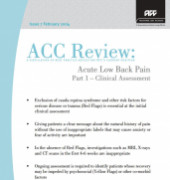 | Acute Low Back Pain Part 1 – Clinical Assessment ACC Review: a distillation of best practice reflecting ACC's current position, 2004 |
 | Language usage for back pain discussions |
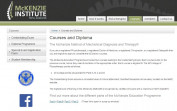 | The McKenzie Method of Mechanical Diagnosis and Therapy® education programme If you are a registered physiotherapist, a registered doctor of medicine, a registered chiropractor, or a registered osteopath, you are eligible to apply to complete the NZ branch courses. |
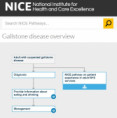 | NICEguidelines [NG59] Nov 2016 |
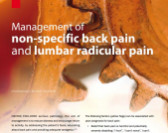 | Management of non-specific back pain and lumbar radicular pain Issue 21, BPJ |
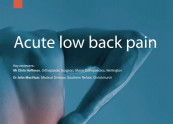 | Acute low back pain Issue 21,BPJ |
 | CME MODULE Acute low back pain Goodfellow Unit, University of Auckland (Need login) |
 | Back pain consultation guideline (12 chapters) University of Otago, Wellington, 2016 |
 | Six things you need to know about low back pain |
Continuing professional development
Functional movement training for back pain with Dr David Johnson neurosurgeon
 (The GP Show, 2019)
(The GP Show, 2019)
Regional HealthPathways NZ
Access to the following regional pathways is localised for each region and access is limited to health providers.If you do not know the login details, contact your DHB or PHO for more information:
- Northland
- Auckland Region
- Midland Region
- Hawke's Bay
- Whanganui & MidCentral
- Wairarapa, Hutt Valley, Capital and Coast (3D)
- Nelson-Marlborough
- West Coast
- Canterbury
- Aoraki (South Canterbury)
- Southern
How to Fix Back Pain in Young Adults
Source: https://www.healthnavigator.org.nz/health-a-z/b/back-pain/
0 Response to "How to Fix Back Pain in Young Adults"
Post a Comment